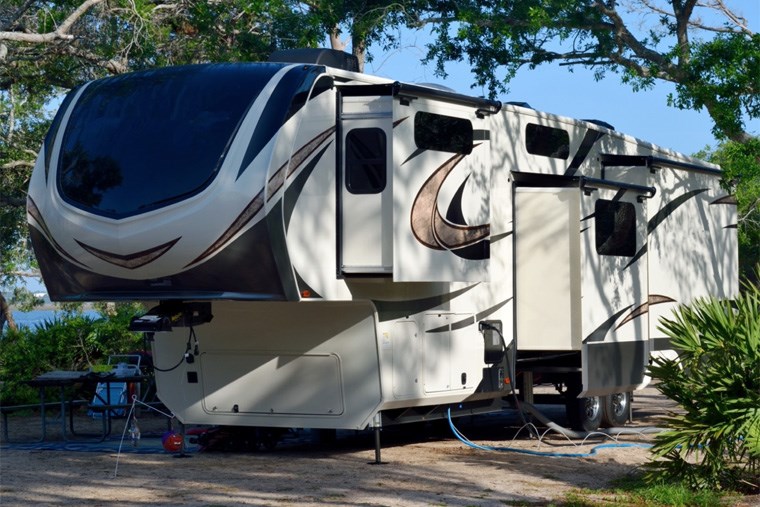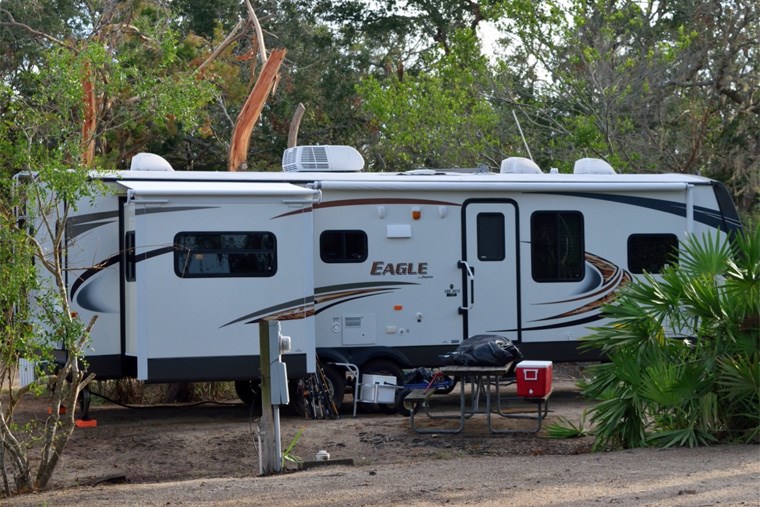A big part of why RVs make camping such a great experience is because they have everything you need. They are fully stocked with freshwater and nobody has to deal with outhouses or the safe disposal of sink water in the campground. The three main tanks in the RV take care of it all.
It is important to perform regular maintenance on these three tanks to make sure it all flows smoothly. RV owners need to know their tanks capacities, how to empty them, and keep them fresh. The three main tanks on any RV are the freshwater tank, the grey water tank and the septic tank. Knowing the capacity of each tank and how to maintain them will ensure that any camping trip is the best that it can be.
Freshwater Tank
An RV’s freshwater tank is where only drinkable (also called potable) water is stored. This water is used in the RVs sinks, shower and toilet. The size of the tank depends on the size and style of the RV. According to Camper Report, the size of the freshwater tank falls somewhere in these ranges:
- Class A Motorhome (21-45 feet): 75 to 100 gallons
- Class B Motorhome (17-19 feet): 20 to 40 gallons
- Class C Motorhome (20-31 feet): 35 to 60 gallons
- 5th Wheel (18-40 feet): 60 to 80 gallons
In order to keep the freshwater tank fresh, occasional treatment is required. RVing Know How suggests using city water to fill the freshwater tank because city water already contains additives that kill off any harmful bacteria. Also, there are commercial products made specifically for cleaning freshwater tanks in RVs. White distilled vinegar can do a good job of cleaning out any unwanted bacteria.
Sanitizing the freshwater tank should be done each spring before the RV is used as well as when the unit is being winterized.
Grey Water Tank
The grey water tank in an RV holds the dirty water that comes from the shower and sinks, but not the toilet. This water is not drinkable, but it is not sewage. Older RVs may not have a grey water tank at all.
Campanada Magazine points out that the drain into the grey water tank is quite narrow, so it is important to avoid food particles or other debris from falling into the sink drain. This can clog of the grey tank system.
Septic Tank (Black Tank)
The septic tank or black tank is where the sewage from the toilet is held. Some RVs have tank sensors to alert you when your tank is reaching capacity, but these sensors are not entirely reliable. With use, you will get the feel of your tank’s capacity and know when to empty it at an approved dumping station.
RV septic tanks and grey tanks should be sanitized using commercial products that are formulated to safely sanitize these tanks. Also keep them working properly by using 1 ply toilet paper and emptying the tanks when they are no less than 2/3 full.
Tank Capacities of Specific RVs
The owner’s manual should list the tank sizes. Otherwise, try searching for the make and model of your particular RV online. Sometimes, tank capacities are listed in this format: ##-##-##. If this is the case, the first number is the size of the freshwater tank, the middle number is the grey water tank and the last number is the septic tank. All of these measurements will be in gallons.
 Paul Brennan from Pixabay
Paul Brennan from PixabayWhen in Doubt, Consult the Manual
Most RVs have complete manuals available online. Make sure to consult the manual for your particular make and model.
Keeping tanks fresh and well maintained will make your RV adventures a lot more fun. Happy travels!

This story was made possible by our Community Partners Program. Thank you RV City for helping to expand local news coverage in Athabasca, Barrhead, Westlock and surrounding area. Learn more.



